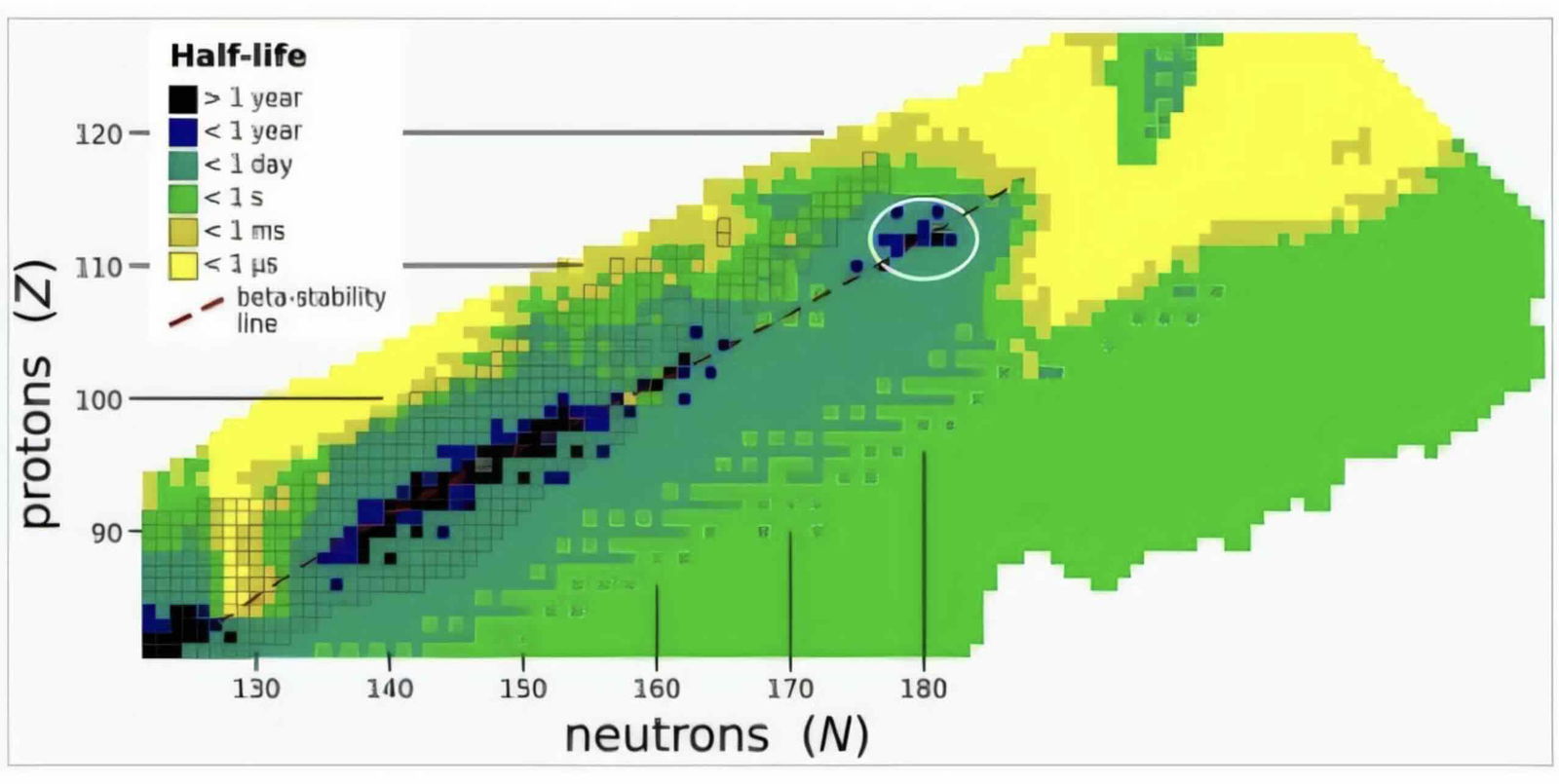Understanding and creating superheavy elements—those with atomic numbers higher than uranium (which has an atomic number of 92)—has intrigued scientists for decades. While uranium is the heaviest element found abundantly on Earth, researchers have previously synthesized elements up to oganesson, whose atomic number is 118.
Now, a new study by a team at Lawrence Berkeley National Laboratory (LBNL) introduces a novel method that could enable further exploration into these elusive, heavy elements. Their results were published in Physical Review Letters.
What Are Superheavy Elements?
Superheavy elements, typically those with atomic numbers above 100, do not naturally occur in significant amounts on Earth due to their short half-lives, which often range from mere seconds to microseconds. The half-life of a superheavy element is the time it takes for half of its atoms to decay into other elements or isotopes, often releasing particles and energy. This is a crucial measure because superheavy elements tend to decay quickly, which limits the time scientists have to study their properties.
Making these elements requires high-energy environments and powerful particle accelerators. The creation and study of superheavy elements like livermorium (whose atomic number is 116) and tennessine (whose atomic number is 117) have not only expanded our knowledge of the periodic table but also brought scientists closer to finding a region theorized as the “island of stability.”
What is the Island of Stability?
The “island of stability” is a hypothesized area on the Segré chart of nuclides, where superheavy elements with particular proton and neutron configurations might exhibit longer half-lives than nearby elements. Elements within this island would be stable enough for scientists to study in more detail, potentially leading to new applications in nuclear physics and materials science.


“Today, the concept of an ‘island of stability’ remains an intriguing topic, with its exact position and extent on the Segré chart continuing to be a subject of active pursuit both in theoretical and experimental nuclear physics,” J.M. Gates of LBNL and colleagues wrote in their paper.
This region is thought to include isotopes near atomic number 112, where specific configurations might enhance nuclear stability. This tantalizing possibility has driven researchers to devise novel methods to approach and explore this island.
Traditional Approaches: The Limits of 48-Calcium
Historically, scientists have made superheavy elements by bombarding actinide targets (elements 89–103) with calcium-48 (48Ca), an isotope notable for its “magic number” of both protons (20) and neutrons (28), which grants it enhanced stability. The “hot-fusion” reaction between actinide targets and calcium-48 has produced superheavy elements up to oganesson. However, as element numbers increase, the likelihood of successful reactions decreases dramatically, requiring increasingly longer run times, sometimes weeks, to synthesize even a single atom. These limitations have led researchers to seek alternative methods.
“A new reaction approach is required,” Gates and his team wrote in their paper.
A New Approach: Using Titanium
To push beyond the limitations of calcium-48, the LBNL team developed an innovative approach by using titanium-50 (50Ti) beams instead. Titanium-50 has slightly more mass than calcium-48 and offers a different configuration of protons and neutrons. The team directed a high-energy titanium beam at a plutonium-244 target in an experiment using the 88-inch Cyclotron accelerator at LBNL. Over 22 days, the team achieved this new method’s first successful synthesis of the superheavy element livermorium.
“This is the first reported production of a SHE [superheavy element] near the predicted island of stability with a beam other than 48-calcium,” the researchers wrote in their paper.
Although the study marks a significant advance, many questions remain. For example, exact beam energy requirements and specific nuclear parameters are still under investigation. Theoretical models, while helpful, need further refinement to predict precise conditions for creating elements with atomic numbers beyond oganesson.
The availability of suitable actinide targets also limits current efforts. Einsteinium and fermium, for instance, are potential targets but are challenging to produce in sufficient quantities.
Going forward, the research team aims to refine their techniques further, hoping to expand the range of isotopes available for future study.
Kenna Hughes-Castleberry is the Science Communicator at JILA (a world-leading physics research institute) and a science writer at The Debrief. Follow and connect with her on X or contact her via email at kenna@thedebrief.org

